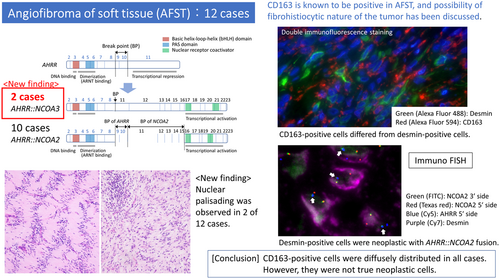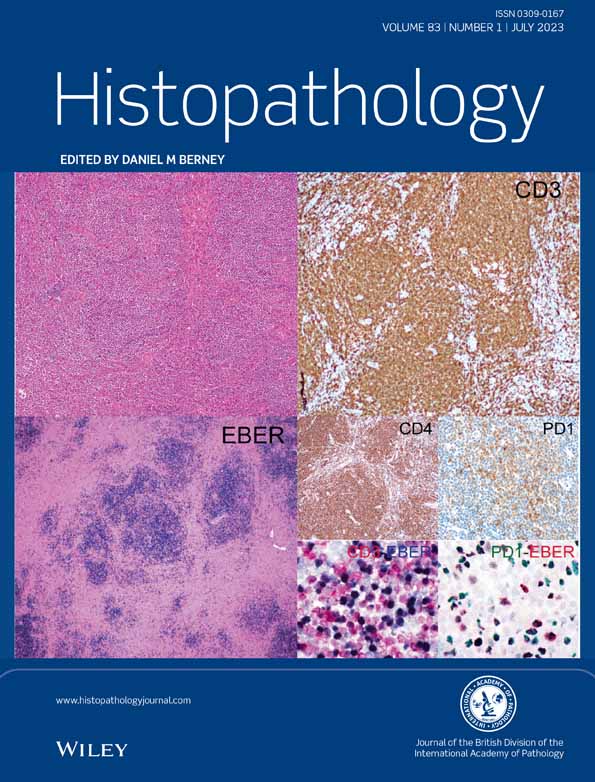Clinicopathologic and genetic characterization of angiofibroma of soft tissue: a study of 12 cases including two cases with AHRR::NCOA3 gene fusion
Abstract
Aims
Angiofibroma of soft tissue (AFST) is a benign tumour characterised by prominent arborizing blood vessels throughout the lesion. Approximately two-thirds of AFST cases were reported to have AHRR::NCOA2 fusion, and only two cases have been reported to have other gene fusions: GTF2I::NCOA2 or GAB1::ABL1. Although AFST is included in fibroblastic and myofibroblastic tumours in the World Health Organization's 2020 classification, histiocytic markers, especially CD163, have been reported to be positive in almost all examined cases, and it still remains the possibility of a fibrohistiocytic nature of the tumour. Therefore, we aimed to clarify the genetic and pathological spectrum of AFST and identify whether histiocytic marker-positive cells were true neoplastic cells.
Methods and results
We evaluated 12 AFST cases, which included 10 cases with AHRR::NCOA2 and two with AHRR::NCOA3 fusions. Pathologically, nuclear palisading, which has not been reported in AFST, was detected in two cases. Furthermore, one tumour resected by additional wide resection revealed severe infiltrative growth. Immunohistochemical analysis indicated varying levels of desmin-positive cells in nine cases, whereas CD163- and CD68-positive cells were diffusely distributed in all 12 cases. We also performed double immunofluorescence staining and immunofluorescence in situ hybridisation in four resected cases with >10% desmin-positive tumour cells. The results suggested that the CD163-positive cells differed from desmin-positive cells with AHRR::NCOA2 fusion in all four cases.
Conclusion
Our findings suggested that AHRR::NCOA3 could be the second most frequent fusion gene, and histiocytic marker-positive cells are not genuine neoplastic cells in AFST.
Graphical Abstract
Conflict of Interest
The authors declare no conflicts of interest.
Open Research
Data availability statement
The data that support the findings of this study are available from the corresponding author upon reasonable request.





